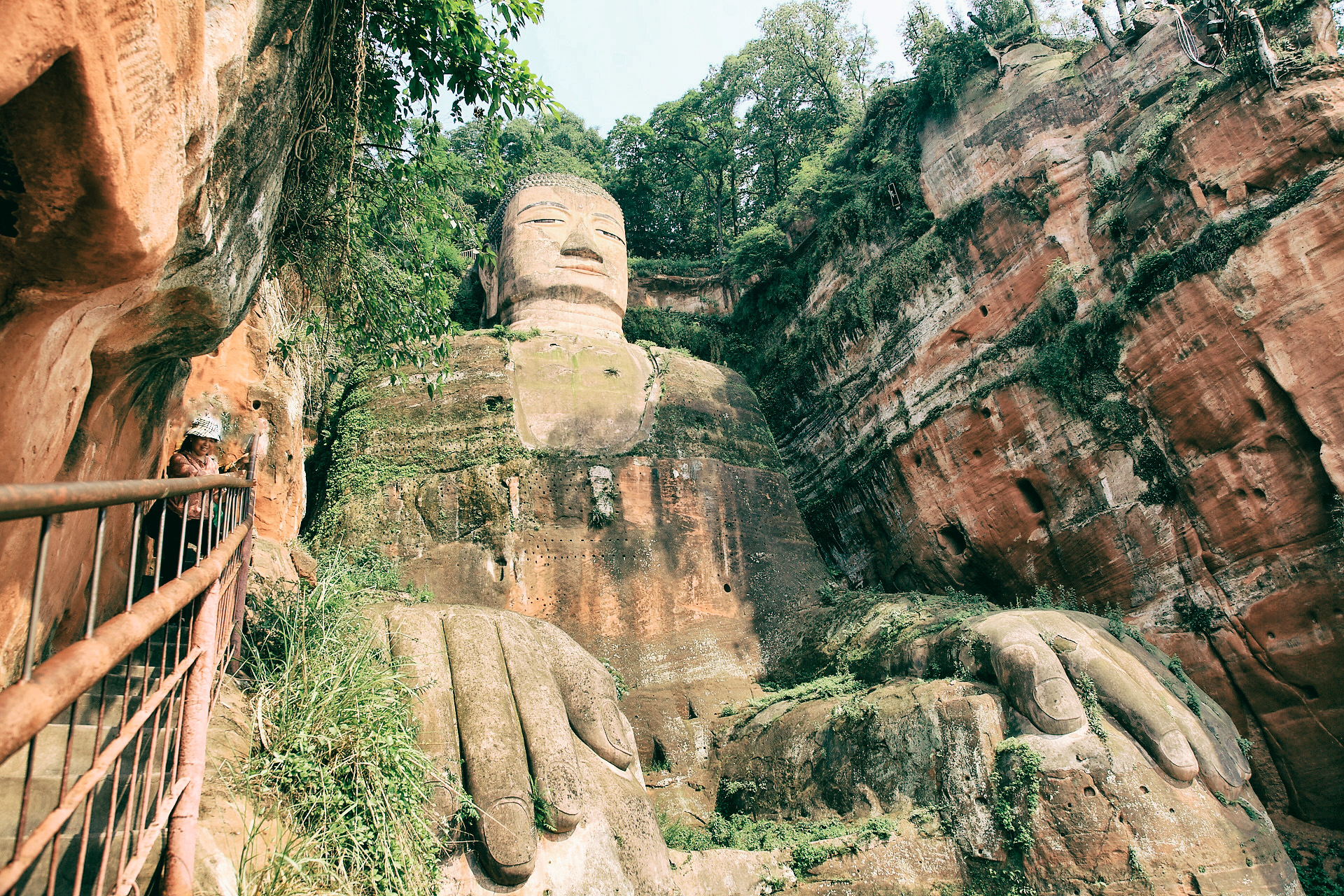Nestled atop Red Sand Mountain near Leshan City in Sichuan Province, the Leshan Giant Buddha stands as a majestic colossus, gazing serenely at the confluence of the Minjiang, Qingyi, and Dadu rivers. Carved from a single cliff face between 713 and 803 CE during the Tang Dynasty, this monumental statue of Maitreya Buddha is not only the tallest stone Buddha in the world (71 meters tall, including its pedestal) but also a UNESCO World Heritage Site and a symbol of China’s spiritual and artistic heritage.

The creation of the Leshan Giant Buddha was rooted in both faith and practical purpose. According to legend, a monk named Hai Tong vowed to carve the statue to appease the river spirits, which had caused devastating floods. After 20 years of fundraising and labor, Hai Tong’s disciples completed the statue after his death. Local folklore claims that when the sculptors carved his eyes, they intentionally left them half-closed to prevent them from “falling out” with his death—a nod to the artist’s humility and devotion.
The statue’s construction was an extraordinary feat of engineering for its time. Workers hauled limestone blocks up the steep cliff using bamboo ropes and primitive pulleys, chiseling the figure directly into the rockface. The Buddha’s seated posture, with hands folded in dhyanasana (meditation), symbolizes enlightenment and compassion. His serene expression, crafted with subtle facial details, conveys a sense of inner peace that has endured for over 1,200 years.
Surrounding the main statue are 7,000 smaller statues of Buddhas, bodhisattvas, and demons, creating a celestial panorama. The statues were added later, reflecting the diverse spiritual beliefs of pilgrims and artisans over the centuries.
For Buddhists, the Leshan Giant Buddha is a pilgrimage site. Visitors often light incense, chant mantras, and make offerings at nearby Lingyun Temple, which houses sacred scriptures and ancient artifacts. The temple complex, nestled among bamboo forests, offers a tranquil retreat from the bustling world below.
The statue also served a practical role in local culture. Its towering presence was believed to ward off floods and evil spirits, protecting the region’s farmers and traders. To this day, locals celebrate festivals honoring the Buddha, blending Buddhist rituals with traditional Sichuan customs.
Today, the Leshan Giant Buddha remains a awe-inspiring sight. Visitors can walk along a stone path to the statue’s base, ascending staircases to view it from different angles. A nearby museum showcases tools and documents related to its construction, offering insights into Tang Dynasty craftsmanship.
The surrounding area is equally captivating. The Three Rivers Confluence offers stunning vistas, while boat tours along the Minjiang River provide a unique perspective of the Buddha against the backdrop of misty mountains. For adventurous travelers, hiking trails through Red Sand Mountain lead to panoramic views.
Practical Insights for Visitors
- Timing: Visit spring (March–May) or autumn (September–November) for mild weather and fewer crowds.
- Transportation: Reach Leshan via high-speed train from Chengdu (1 hour) or bus.
- Entry: ¥50–¥60 (≈$7–$8 USD), with free access to Lingyun Temple.
- Guided Tours: Learn about the statue’s history and symbolism with English-speaking guides.
- Local Cuisine: Try vegetarian dishes at nearby temples or spicy Sichuan dishes like mapo tofu.
The Leshan Giant Buddha is more than a relic—it is a living embodiment of China’s spiritual and artistic legacy. Its enduring presence speaks to the ingenuity of ancient artisans, the depth of Buddhist philosophy, and humanity’s timeless quest for harmony with nature. As the sun sets over the rivers, casting a golden glow on the statue’s weathered stone, visitors are reminded of the profound connection between faith, art, and the land that nurtures them all.
In a world increasingly shaped by modernity, the Leshan Giant Buddha stands as a gentle beacon, urging us to look beyond the fleeting to the eternal truths that define our shared heritage.


